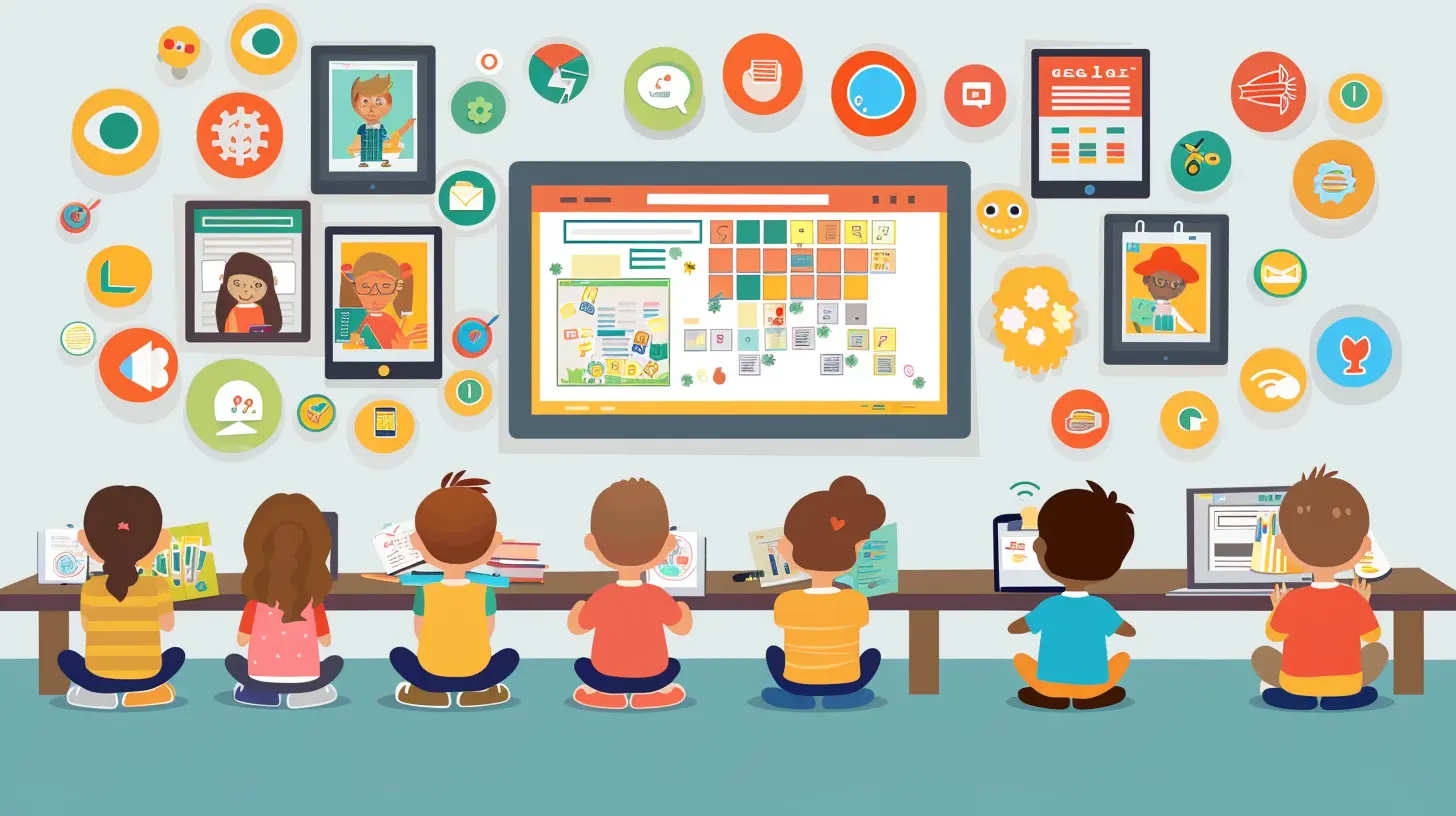Tech-Savvy Tips for Managing a Paperless Classroom"
21 June 2025
Going paperless in the classroom isn’t just about saving trees—it’s about streamlining workflow, boosting student engagement, and making learning more accessible. With the right tools and strategies, you can create a seamless digital environment where students thrive.
If you're ready to ditch the endless stacks of paper, here are some tech-savvy tips to help you manage a paperless classroom effortlessly.
1. Choose the Right Learning Management System (LMS)
The backbone of any paperless classroom is a solid LMS. It serves as a central hub where students can access assignments, submit work, and communicate with teachers. Some of the best LMS platforms include:- Google Classroom – Perfect for schools already using Google Workspace.
- Moodle – A customizable, open-source option.
- Canvas – Ideal for higher education and advanced learning.
- Schoology – A great choice for K-12 learning environments.
A good LMS enhances collaboration, keeps content organized, and minimizes the chaos of managing multiple assignments manually.
2. Use Cloud Storage for Easy Access
Instead of dealing with physical folders and binders, store everything in cloud-based platforms. This ensures students and teachers can access materials anytime, anywhere.Popular cloud storage options include:
- Google Drive – Seamless integration with Google Classroom.
- Dropbox – Great for organizing large files and sharing securely.
- OneDrive – Best for schools using Microsoft 365.
Make it a habit to organize files into clearly labeled folders to avoid confusion and keep everything easily searchable.
3. Adopt Digital Note-Taking Apps
Encourage students to ditch notebooks and switch to digital note-taking apps. These apps allow them to organize, search, and retrieve notes quickly—no more flipping through pages to find what they need.Some top choices include:
- Evernote – Great for taking detailed notes with multimedia attachments.
- Microsoft OneNote – Works like a digital binder for organizing subjects.
- Notion – Ideal for creating structured, interactive notes.
Digital notes also eliminate the issue of lost or forgotten notebooks.
4. Utilize E-Books and Online Resources
No more lugging around heavy textbooks! Replace traditional books with e-books and online resources. Many platforms offer free or subscription-based access to academic materials.- Project Gutenberg – Free access to thousands of classic books.
- Khan Academy – Excellent for interactive lessons in various subjects.
- CK-12 – Provides customizable digital textbooks.
- OpenStax – Offers free, peer-reviewed college textbooks.
Using digital resources makes learning more dynamic and convenient.
5. Switch to Online Assignments and Assessments
Ditch paper-based quizzes and assignments by transitioning to digital platforms. This reduces clutter, saves grading time, and ensures assignments are never “lost.”Some useful tools for online assignments and quizzes include:
- Google Forms – Great for quick quizzes and feedback collection.
- Quizizz – Interactive quizzes that make learning fun.
- Kahoot! – Game-based learning that engages students.
- Edmodo – A social learning platform with built-in assignments.
These tools offer instant grading and feedback, making learning more efficient.
6. Encourage Collaborative Learning with Technology
Collaboration is key in a digital classroom. Encourage students to work together using collaborative tools:- Google Docs & Sheets – Real-time collaboration on documents and spreadsheets.
- Padlet – A digital bulletin board where students can share ideas.
- Microsoft Teams – Great for group discussions and projects.
- Trello – Helps students organize tasks and projects effectively.
Collaboration tools prepare students for the modern workplace, where teamwork relies heavily on digital communication.
7. Leverage Video and Multimedia Learning
Text-heavy learning can be boring. Enhance lessons with videos, podcasts, and interactive media to make concepts easier to grasp.Great sources for multimedia learning include:
- YouTube EDU – Educational videos on a wide range of topics.
- TED-Ed – Animated lessons from experts in various fields.
- Flipgrid – Encourages students to record and share video responses.
- Edpuzzle – Allows teachers to create interactive video lessons.
Multimedia elements cater to different learning styles, making classes more engaging.
8. Use Digital Whiteboards for Interactive Lessons
Replace traditional whiteboards with interactive digital whiteboards. These make lectures more engaging and allow students to contribute in real-time.Some fantastic digital whiteboards include:
- Jamboard – A simple yet effective option from Google.
- Miro – Ideal for visual collaboration.
- Explain Everything – An advanced tool for creating animated lessons.
Digital whiteboards enhance participation and creativity, making learning more hands-on.
9. Automate Attendance and Classroom Management
No more paper roll calls! Use digital attendance and classroom management tools to streamline daily tasks.Some popular options include:
- ClassDojo – Tracks attendance and student behavior.
- Kiddom – Combines lesson planning with student performance tracking.
- PowerSchool – A complete classroom management solution.
Automating such tasks saves time and reduces distractions, allowing you to focus on teaching.
10. Implement a Digital Grading System
Grading papers can be time-consuming. Digital grading tools help you provide instant feedback and streamline grading.Some useful grading tools include:
- Google Classroom – Integrated grading features.
- Turnitin – Checks for plagiarism and originality.
- GradeScope – AI-assisted grading for exams and assignments.
A digital grading system 🏆 boosts efficiency and provides students with quick, constructive feedback.
11. Ensure Cybersecurity and Digital Etiquette
Managing a paperless classroom means ensuring online safety and teaching students proper digital etiquette.Some key cybersecurity measures include:
- Using strong passwords – Encourage students to use password managers.
- Limiting access to sensitive documents – Set permissions carefully.
- Teaching digital citizenship – Educate students about online behavior and data safety.
Cybersecurity practices protect student data and foster responsible technology use.
12. Reduce Distractions with Focus Apps
Students working on digital devices can easily get distracted. Use focus-enhancing tools to keep them engaged.Some helpful apps include:
- StayFocusd – Blocks distracting websites.
- Forest – Encourages students to stay off their phones.
- Cold Turkey – A powerful distraction blocker.
- Pomodone – Uses the Pomodoro technique to boost productivity.
Reducing distractions allows students to stay on track and maximize learning time.
Final Thoughts
Transitioning to a paperless classroom isn’t just about eliminating paper—it’s about enhancing the entire learning experience. By using the right tech tools, encouraging collaboration, and implementing smart organization strategies, you can create a dynamic and efficient digital learning space.Ready to give it a shot? Start small, experiment with different tools, and watch how your classroom transforms into a modern, tech-savvy learning hub.
all images in this post were generated using AI tools
Category:
Classroom TechnologyAuthor:

Olivia Lewis
Discussion
rate this article
2 comments
Callie Bennett
Finally, a classroom where 'paper jam' means something entirely different—like my printer taking a vacation!
October 21, 2025 at 11:21 AM

Olivia Lewis
Glad you enjoyed the article! Embracing a paperless classroom definitely helps minimize those printer "vacations." Keep the tech tips coming!
Brianna Hahn
Paperless classrooms are the future, darling! But if your tech skills are stuck in the Stone Age, it's time for a serious upgrade. Embrace the digital revolution or risk becoming a relic of the past!
June 27, 2025 at 4:35 AM

Olivia Lewis
Absolutely! Embracing technology is essential for an effective paperless classroom. Let's upgrade those skills together!


